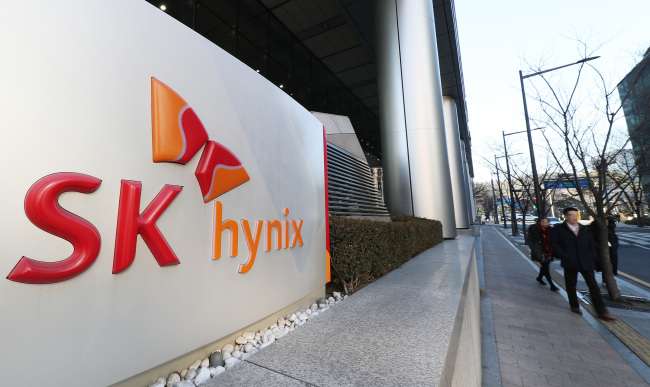SK hynix, the world’s second-largest memory chip provider, announced Thursday it will invest a total of 120 trillion won ($106.65 billion) to build four fabrication lines at a new semiconductor industrial complex in Yongin, Gyeonggi Province.
According to the announcement, a special purpose company set up by SK Engineering & Construction and multiple financial investors has submitted a letter of intent for the investment to the city of Yongin, joining forces to help create a fresh cluster for chipmakers’ research and development centers and production facilities.
The company has asked Yongin City for a total of 4.48 million square meters of land for the cluster, which will be the world’s largest semiconductor cluster. The cities of Icheon, Cheongju, Cheonan and Gumi had been fiercely competing to be chosen for SK hynix’s plan.
If the land is granted, SK hynix will invest a total of 120 trillion won starting from 2022 to build four fabrication lines for semiconductors.
 |
(Yonhap) |
SK hynix currently runs its main fabs in Icheon, Gyeonggi Province, and Cheongju, North Chungcheong Province. It has been seeking land in the Seoul metropolitan region, as this may help attract top talent to the firm. Yongin is 30 to 40 minutes by car from the southern part of Seoul.
More than 50 semiconductor equipment makers, material providers and parts suppliers will move to the new complex in an effort to strengthen the business environment of the semiconductor industry.
Sk hynix will also provide 1.22 trillion won for the next 10 years for contractors under coprosperity programs aimed at developing chips needed for artificial intelligence. Of the amount, 300 billion won will be injected to create funds, 638 billion won to establish an AI-based cooperation center and promote relevant programs, and 280 billion won for joint research and development projects.
While maintaining the headquarters and fab for DRAM in Icheon, SK hynix will make the Cheongju fab a NAND flash-focused facility and the upcoming fabs in Yongin for next-generation memory chips.
By Song Su-hyun (
song@heraldcorp.com)








